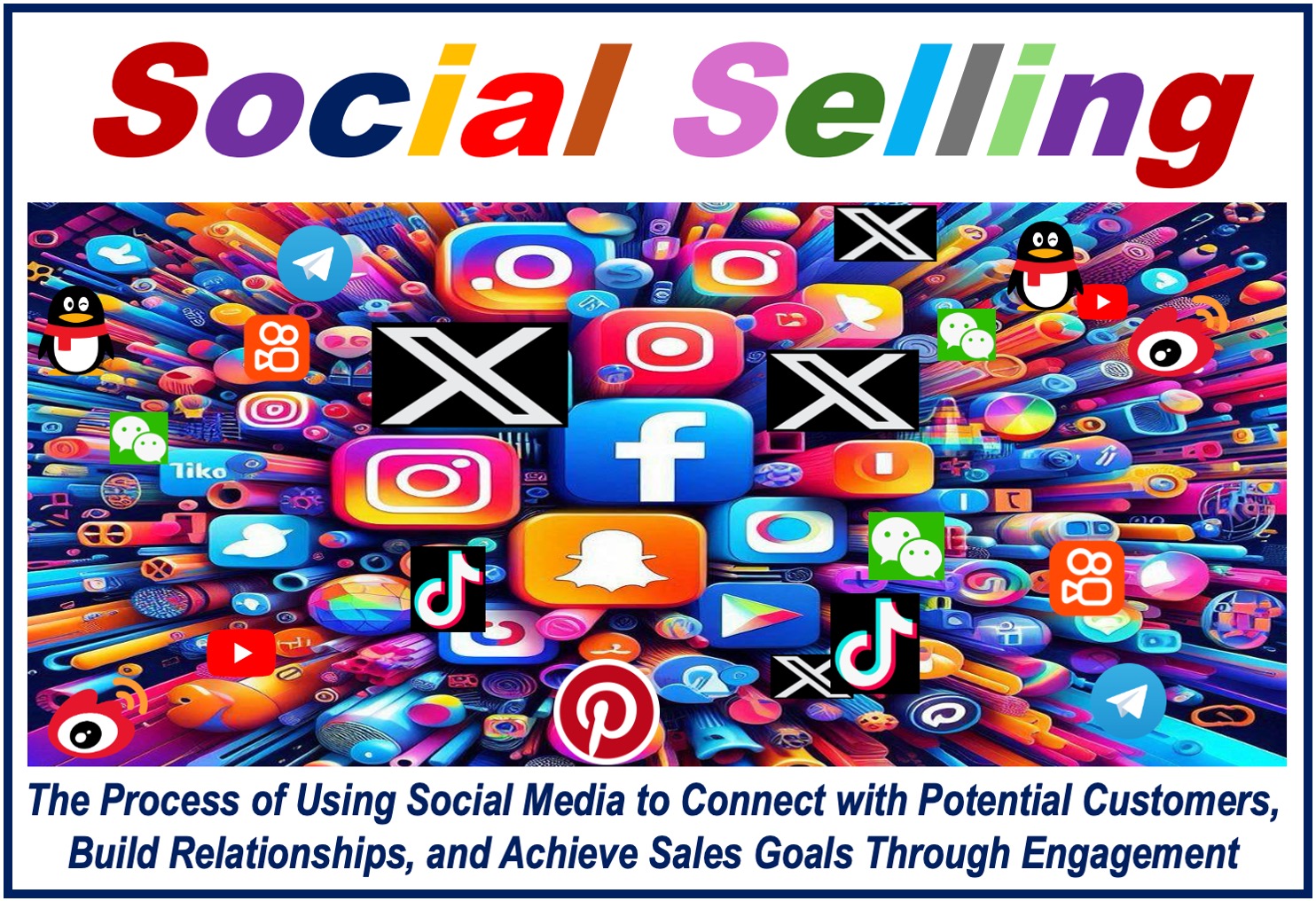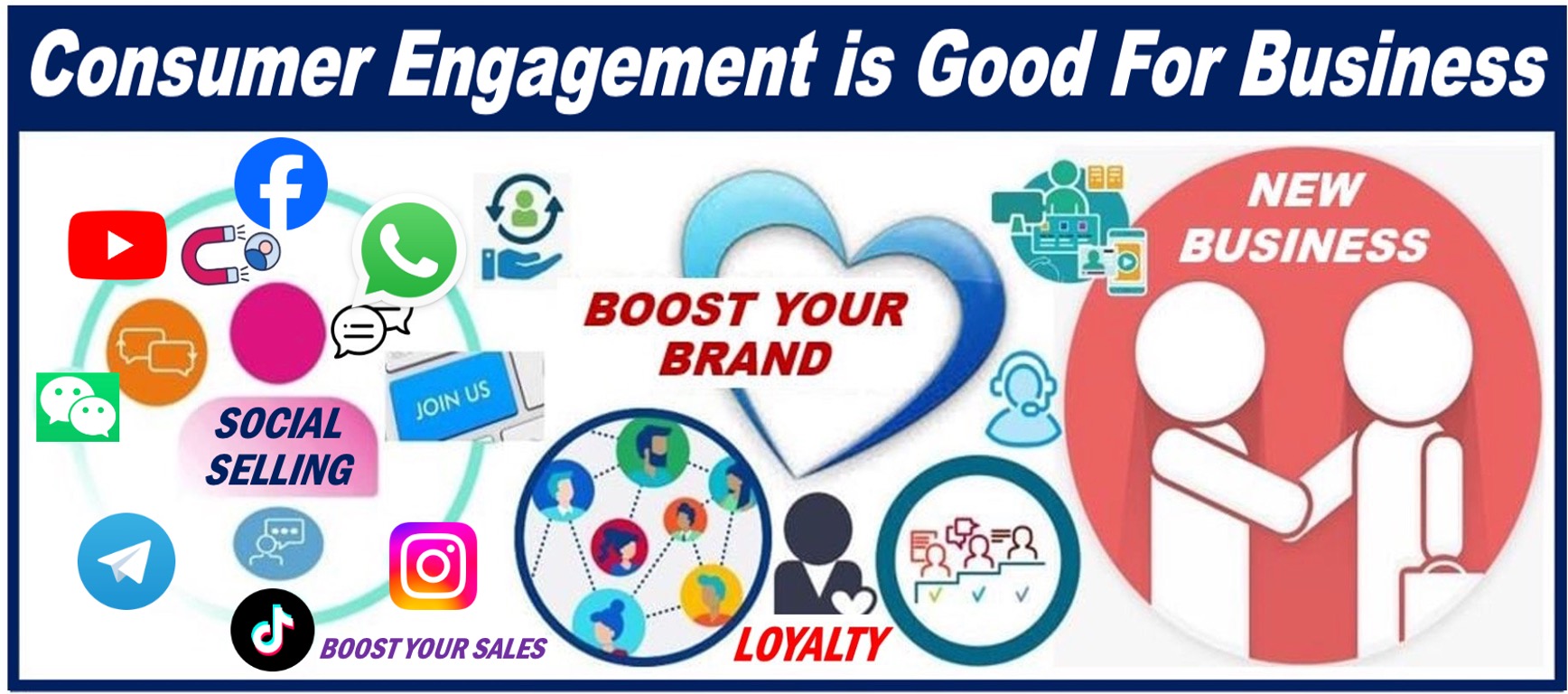If you use social medial platforms to connect with potential customers, build relationships, and try to achieve sales, you are involved in Social Selling.
Unlike traditional selling methods, which typically consist of cold calls and emails, social selling leverages the power of social networks to engage directly with prospects. In this context, a prospect is somebody who you feel could turn into a paying customer.
If you want to adopt a social selling strategy, you must first create a professional presence on a social media platform such as Facebook, Instagram, X, Pinterest, TikTok, or LinkedIn.
Sales professionals share relevant content in these platforms. They participate in discussions and connect with potential customers. Their aim is to build trust and establish a reputation as an expert in the field.

Lately, this has grown into something called virtual selling, where salespeople also use tools like video calls, emails, and sales software to reach buyers, not just social media. It’s all about using technology to make meaningful connections and close deals.
Social selling involves…
Listening
To succeed in social selling, you must learn to become a great listener. By monitoring social media conversations, you will be able to identify potential leads, understand their needs, and engage with them in a meaningful way.
This involves joining relevant groups, following industry hashtags, and keeping an eye on what competitors are doing.
Content Sharing
Content sharing is an important component of a successful strategy. By sharing valuable content, such as infographics, videos, blog posts, and articles, you can provide value to your audience and position yourself or your company as a thought leader.
It is important to make sure that the content you share is relevant to the audience’s interests and addresses their pain points. Pain points are specific problems or challenges that consumers experience and seek solutions for.
Engagement

Engagement is also crucial. You should actively participate in discussions, respond to comments and questions, and comment on posts. This helps build a relationship with your target audience and fosters a sense of community.
Social selling tools
There are various tools that can help you manage your social media presence, track engagement, and identify hot prospects. Examples include Hootsuite, Buffer, and LinkedIn Sales Navigator.
These tools can save you a lot of time and help make your social selling process more efficient.
Measuring effectiveness
You need to know how effective your efforts are. You should track metrics such as the number of connections you made, engagement rates, and the conversion rate of leads to customers. For example, if an average of 4 out of 40 leads become customers, your conversion rate is 10% on 1-in-10.
Gathering and analyzing this data can help you refine your social selling strategies and improve results over time.
Benefits of social selling
Reach and Relationships
Social selling allows you to reach a wider audience, build stronger relationships with leads, prospects, and customers, and shorten the sales cycle.
Insights for Strategy
It also provides valuable insights into the needs and preferences of your target audience, which can help improve your marketing strategies and product development plans.
Brand Awareness
By consistently engaging on social media, you can increase the visibility of your brand and establish a strong online presence.
Credibility
Sharing valuable content and insights helps position you as a thought leader, building trust and credibility with your audience.
Customer Loyalty and Retention
Engaging with your customers on social media helps you maintain relationships and fosters loyalty, leading to higher customer retention rates.
Marketing Cost-Effectiveness
Social selling can be a cost-effective way for you to reach and engage with potential customers compared to traditional marketing methods.
Real-Time Feedback
While engaging with consumers and customers on social media platforms, you receive immediate feedback, which enables you to quickly adjust your strategies and offerings.
Competitive Advantage
By leveraging social selling, you can stay ahead of competitors who may still rely on traditional marketing and sales methods.
Networking Opportunities
Interacting with many people on social media platforms helps you connect with industry influencers, potential partners, and other professionals who can help expand or improve your business.
Social selling and social media marketing
Although “social selling” and “social media marketing” share similarities and often overlap, they are not the same. Here are the key differences:
Social Selling
Here, the focus is to engage with consumers and prospects on social medial and build relationships, trust, and credibility. The aim is to move them through the sales funnel.
Social Media Marketing
Your focus here is to promote products, services, or brand awareness through social media platforms. You do this by placing ads, driving website traffic, managing social media profiles, and analyzing social media performance.
Put simply, social selling is more about one-on-one interactions and relationship-building with potential customers, while social media marketing is broader, focusing on reaching a larger audience and promoting the brand. Social selling does not include running ads on social media platforms while social media marketing does.
Summary
In summary, social selling is a modern way of using social media to find and connect with potential customers. It helps you build relationships and reach sales goals.
By creating a professional profile, listening to what potential customers need, sharing helpful content, interacting with the audience, and using social selling tools, you can improve your sales efforts and achieve better results.
